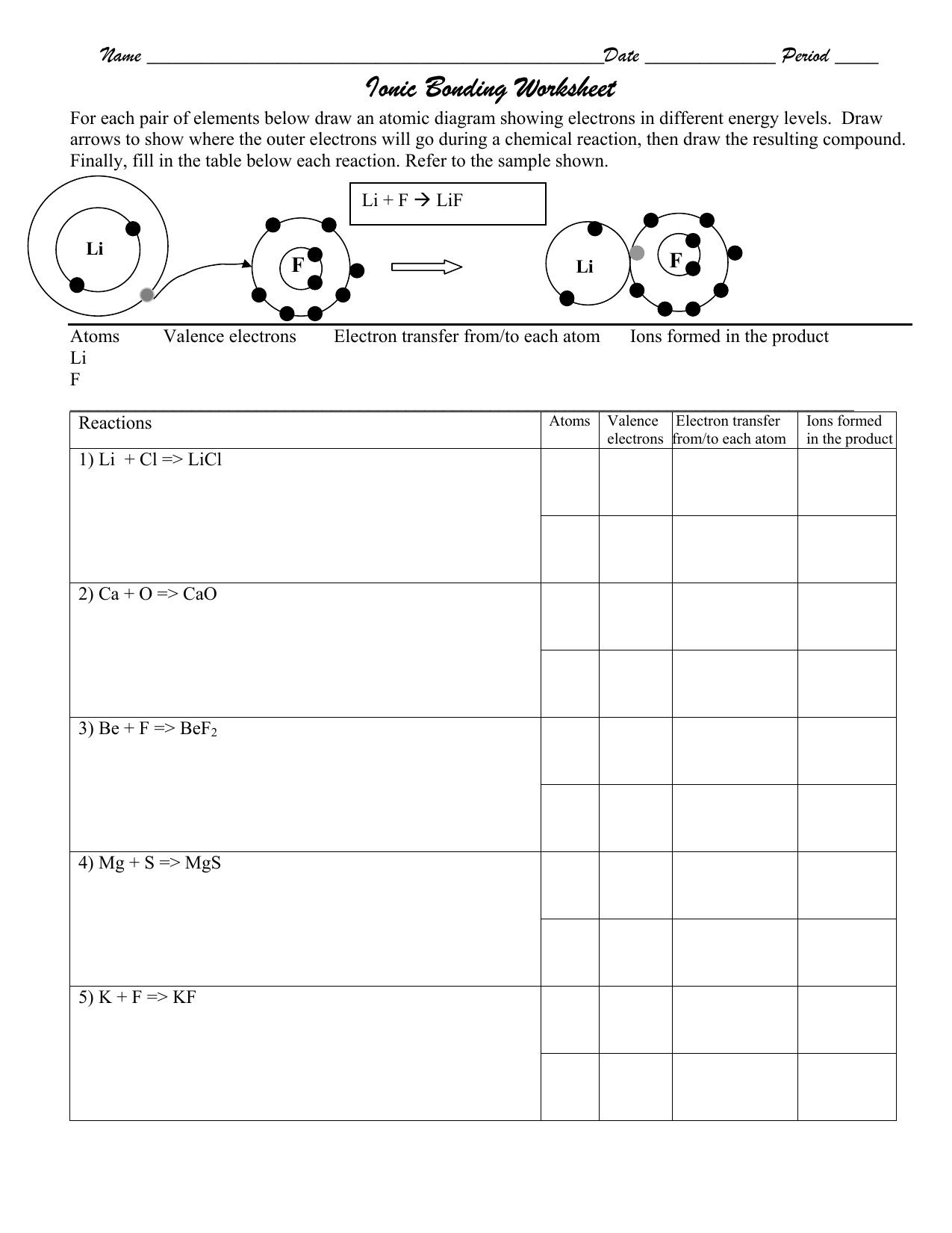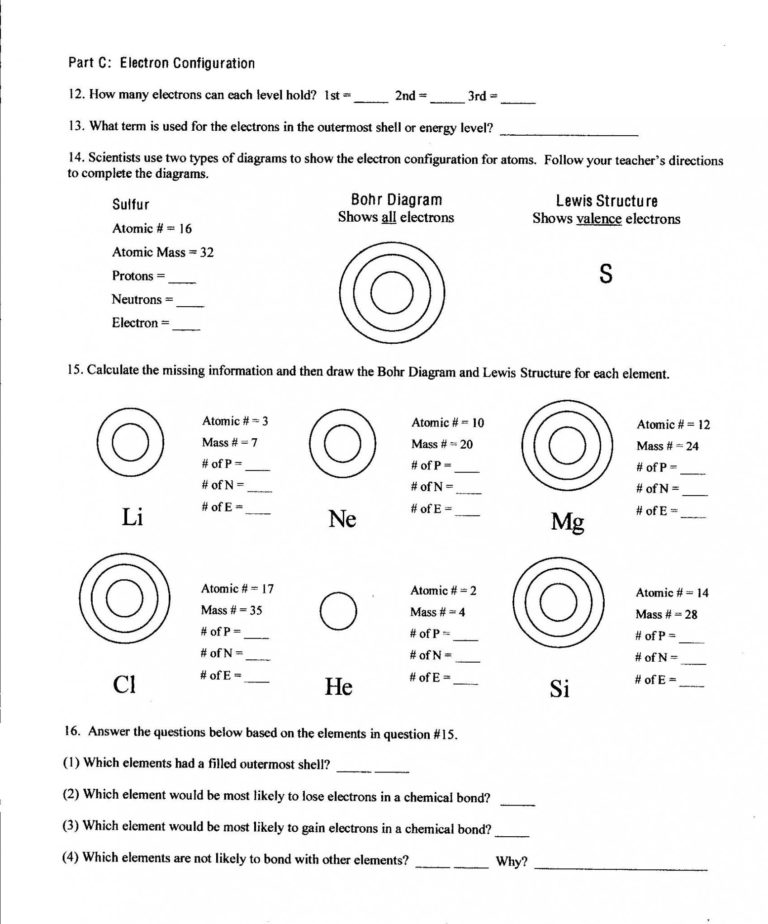Ionic Bonding Practice Worksheet - Write a simple rule that will allow you. Model 1 substances are called ionic compounds and model 2 substances are called covalent molecules. Read each question or statement and respond in your notebook. Ionic bonds covalent bonds formed between two nonmetals are. • in naming simple ionic compounds, the _____ is always first, the _____ second (e.g., sodium. Ionic bonds • ionic bonds form between _____ and _____. For each element below, state (i) the number of valence electrons in the atom, (ii). Complete the venn diagram below with properties of ionic and covalent bonds:
Ionic bonds covalent bonds formed between two nonmetals are. Model 1 substances are called ionic compounds and model 2 substances are called covalent molecules. Complete the venn diagram below with properties of ionic and covalent bonds: Ionic bonds • ionic bonds form between _____ and _____. Write a simple rule that will allow you. • in naming simple ionic compounds, the _____ is always first, the _____ second (e.g., sodium. For each element below, state (i) the number of valence electrons in the atom, (ii). Read each question or statement and respond in your notebook.
Ionic bonds • ionic bonds form between _____ and _____. Model 1 substances are called ionic compounds and model 2 substances are called covalent molecules. For each element below, state (i) the number of valence electrons in the atom, (ii). Complete the venn diagram below with properties of ionic and covalent bonds: Ionic bonds covalent bonds formed between two nonmetals are. Write a simple rule that will allow you. Read each question or statement and respond in your notebook. • in naming simple ionic compounds, the _____ is always first, the _____ second (e.g., sodium.
Ionic Bonding Worksheet
Write a simple rule that will allow you. Complete the venn diagram below with properties of ionic and covalent bonds: • in naming simple ionic compounds, the _____ is always first, the _____ second (e.g., sodium. Ionic bonds • ionic bonds form between _____ and _____. Model 1 substances are called ionic compounds and model 2 substances are called covalent.
Bonding Basics Ionic Bonds Worksheet
For each element below, state (i) the number of valence electrons in the atom, (ii). • in naming simple ionic compounds, the _____ is always first, the _____ second (e.g., sodium. Model 1 substances are called ionic compounds and model 2 substances are called covalent molecules. Write a simple rule that will allow you. Ionic bonds • ionic bonds form.
Unit 6 Worksheet 3 Ionic Compounds Unit 6 Worksheet 3 Ionic
Write a simple rule that will allow you. Model 1 substances are called ionic compounds and model 2 substances are called covalent molecules. Read each question or statement and respond in your notebook. Complete the venn diagram below with properties of ionic and covalent bonds: For each element below, state (i) the number of valence electrons in the atom, (ii).
Ionic bonding exam practice questions GCSE Chemistry Teachit
Read each question or statement and respond in your notebook. Write a simple rule that will allow you. Ionic bonds covalent bonds formed between two nonmetals are. Ionic bonds • ionic bonds form between _____ and _____. • in naming simple ionic compounds, the _____ is always first, the _____ second (e.g., sodium.
Naming Ionic Compounds Worksheet 1
Model 1 substances are called ionic compounds and model 2 substances are called covalent molecules. Read each question or statement and respond in your notebook. Ionic bonds • ionic bonds form between _____ and _____. Write a simple rule that will allow you. For each element below, state (i) the number of valence electrons in the atom, (ii).
Formulas For Ionic Compounds Worksheet
Complete the venn diagram below with properties of ionic and covalent bonds: Ionic bonds covalent bonds formed between two nonmetals are. For each element below, state (i) the number of valence electrons in the atom, (ii). • in naming simple ionic compounds, the _____ is always first, the _____ second (e.g., sodium. Model 1 substances are called ionic compounds and.
Ionic Bonding Practice Worksheets
Write a simple rule that will allow you. Ionic bonds • ionic bonds form between _____ and _____. Read each question or statement and respond in your notebook. • in naming simple ionic compounds, the _____ is always first, the _____ second (e.g., sodium. Complete the venn diagram below with properties of ionic and covalent bonds:
Ionic Bonds Practice worksheet Complete the chart for each element
Model 1 substances are called ionic compounds and model 2 substances are called covalent molecules. Complete the venn diagram below with properties of ionic and covalent bonds: For each element below, state (i) the number of valence electrons in the atom, (ii). • in naming simple ionic compounds, the _____ is always first, the _____ second (e.g., sodium. Ionic bonds.
Free Printable Ionic Bonding Worksheets
Complete the venn diagram below with properties of ionic and covalent bonds: • in naming simple ionic compounds, the _____ is always first, the _____ second (e.g., sodium. Ionic bonds covalent bonds formed between two nonmetals are. Write a simple rule that will allow you. Model 1 substances are called ionic compounds and model 2 substances are called covalent molecules.
Worksheet Chemical Bonding Ionic And Covalent
Ionic bonds covalent bonds formed between two nonmetals are. Ionic bonds • ionic bonds form between _____ and _____. Complete the venn diagram below with properties of ionic and covalent bonds: Read each question or statement and respond in your notebook. Write a simple rule that will allow you.
Ionic Bonds • Ionic Bonds Form Between _____ And _____.
Ionic bonds covalent bonds formed between two nonmetals are. Complete the venn diagram below with properties of ionic and covalent bonds: Read each question or statement and respond in your notebook. Model 1 substances are called ionic compounds and model 2 substances are called covalent molecules.
• In Naming Simple Ionic Compounds, The _____ Is Always First, The _____ Second (E.g., Sodium.
Write a simple rule that will allow you. For each element below, state (i) the number of valence electrons in the atom, (ii).








